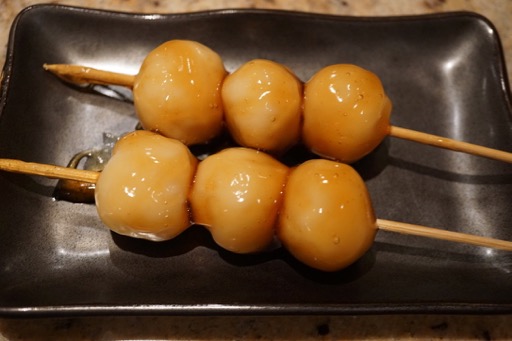Recently we got a
kabocha かぼちゃ (Japanese) squash by the grocery delivery which was quite large. I made
simmered “Kabocha” and
potage but still half remained. Since it was near halloween, pumpkin recipes were appearing everywhere. My wife found a recipe for
pumpkin/buttercup squash cookies on the Washington post web site. She thought since buttercup squash and Kabocha are close squash relatives this recipe may be a good way to use up the remaining Kabocha. Also, we were both curious as to how a squash could be used to make a cookie. The picture below shows the 3 variations of the cookies my wife made. As suggested by the original recipe there were 3 coatings: cinnamon sugar (upper left), pine nut (upper right) and toasted coconut (bottom). These were surprisingly good. They were just bite sized and somewhere between a cake and cookie.
Ingredients 1/2 cup flesh from cooked/roasted winter squash* (may substitute yam, sugar pumpkin or sweet potato. We substituted kabocha squash)
1 large egg yolk, lightly beaten
1 1/2 cups almond meal/flour, or more as needed
3/4 cup sugar
1 teaspoon vanilla extract
Finely grated zest of 1 lemon
Pine nuts, for coating (optional)
Shredded coconut, for coating (sweetened or unsweetened; optional)
1/4 cup sugar plus 1/4 teaspoon ground cinnamon, for coating (optional)
*We used kabocha squash, cooked in a microwave oven and mashed. We further use a ricer to make it smooth.
Ingredients (X2)
1 cup flesh from cooked/roasted winter squash* (may substitute yam, sugar pumpkin or sweet potato. We substituted kabocha squash)
2 large egg yolk, lightly beaten
3 cups almond meal/flour, or more as needed
1 1/2 cup sugar
2 teaspoon vanilla extract
Finely grated zest of 2 lemon
Pine nuts, for coating (optional)
Shredded coconut, for coating (sweetened or unsweetened; optional)
1/4 cup sugar plus 1/4 teaspoon ground cinnamon, for coating (optional)
Sesame seeds for coating (optional).
Directions:
Combine the squash, egg yolk, almond meal/flour, sugar, vanilla extract and lemon zest in a mixing bowl, stirring to form a smooth, very soft dough. Cover and refrigerate for 30 minutes or up to 1 day. If the dough seems too pasty and wet, add a little more almond meal/flour, keeping in mind that the dough will firm up further as it chills.
Preheat the oven to 350 degrees. Line two baking sheets with parchment paper or silicone liners.
Divide the dough into 24 equal portions (about 2 teaspoons), rolling each one into a ball. Before spacing them on the baking sheets at least 1 inch apart, roll some of them in one or more of the coating options listed below. Bake (middle rack) for 15 to 20 minutes, during which time the cookies should not spread much.
Cool completely on the baking sheets before serving or storing.
All three version were very good. The cookie itself is moist and soft with a mild slightly sweet squash/pumpkin flavor. Not quite a typical cookie but very good. And three different coating worked excellently. We really like this cookie.


















































